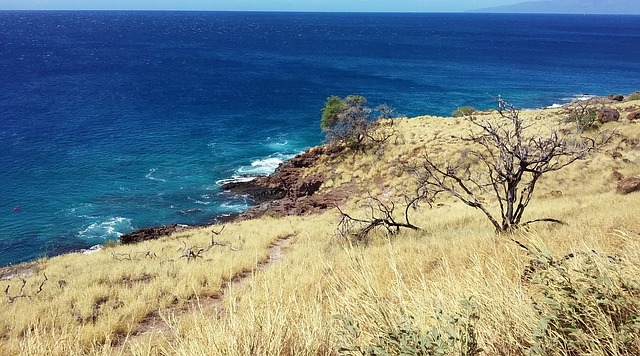
If a person discharges a pollutant from a point source into groundwater, and that pollutant then reaches a “Water of the United States” as defined under the Clean Water Act, is a discharge permit required? Two recent court cases have reached different results on this issue and now the Environmental Protection Agency is seeking public comment on this question.

Background
The Clean Water Act Section 402 requires a National Pollutant Discharge Elimination System (NPDES) permit for the discharge of “pollutants” from “point sources” into “navigable waters.” Each of these terms is further defined under the Clean Water Act. A “pollutant” is broadly defined and includes any type of industrial, municipal, or agricultural waste. Examples could include soil, rock, fertilizer, herbicides, pesticides, or manure. A “point source” is defined as “any discernible, confined, and discrete conveyance, including but not limited to any pipe, ditch, channel, tunnel, conduit, well, discrete fissure, container, rolling stock, concentrated animal feeding operation, or vessel or other floating craft, from which pollutants are or may be discharged.” Finally, “navigable waters” are defined as being “waters of the United States,” the proper definition of which there have been years of debate and litigation.
Hawai’i Wildlife Fund v. County of Maui
The County of Maui has four wells at a wastewater facility that currently serve as a means of disposing sewage (effluent) into groundwater and eventually into the Pacific Ocean. When sewage is received by the facility, it is treated and then either sold for irrigation purposes or injected into these wells for disposal. All parties agree that once the effluent is injected into the groundwater, some of it eventually reaches the Pacific Ocean. This was confirmed by various studies, including one conducted in 2013 using tracer dye to determine when and where the effluent disposed of in the wells took to reach the Pacific.
The Hawai’i Wildlife Fund filed suit and the trial court found that the County of Maui violated the Clean Water Act by discharging effluent into groundwater and into the Ocean without the required NPDES permit. The trial court also held that groundwater was a Water of the United States. The County appealed to the United States Court of Appeal for the Ninth Circuit.
The Ninth Circuit upheld the trial court decision. [Read full Opinion here.] The Court easily found that the effluent was a pollutant and that the wells constitute a “point source” discharge. The court “assumed without deciding” that groundwater was neither a point source discharge, nor a Water of the United States. The critical issue in the case became whether the Clean Water Act applies only where the pollutant is discharged directly into a Water of the United States, or whether it applies where a pollutant is discharged into groundwater and then indirectly makes its way into a Water of the United States.
The Court held that because a county discharges pollutants from a point source that ends up in a Water of the United States, a permit was required, regardless of the fact that it travels through groundwater as a channel to reach the jurisdictional water. The opinion cites cases from other courts reaching the same result. Thus, because the County (1) discharged pollutants from a point source, (2) the pollutants are “fairly traceable from the point source to a navigable water such that the discharge is the functional equivalent of a discharge into the navigable water,” and (3) the pollutant levels reaching the navigable water are more than de minimus, the Clean Water Act does apply and a NPDES permit was required.
Kentucky Waterways Alliance v. Kentucky Utilities Co.
A coal-fired power plant in Kentucky is located near Herrington Lake. The plant generates coal combustion residuals of fly ash and bottom ash as a result of its coal-burning processes. Historically, the residuals were disposed of by transport through a sluice system to settling ponds. The Sierra Club claims that the plant’s settling ponds are contaminating groundwater in the area and that the contaminated groundwater was discharging via spring into Herrington Lake. They filed a citizen suit against the plant based, in part, on an alleged violation of the Clean Water Act, claiming that the plant is discharging pollutants, which have seeped from the ponds into the groundwater which emerges from springs and discharges into Herrington Lake, a Water of the United States, without a permit.
The plant filed a Motion to Dismiss the Clean Water Act claims because the Sierra Club did not allege that “pollutants are conveyed directly” from the ponds to the navigable waters and that the pollution is non-point source, which is not governed by the Clean Water Act. The plaintiffs responded that their allegation that the groundwater is hydrologically connected to the Water of the United States was sufficient to state a claim.
The US Court of Appeals for the Eastern District of Kentucky sided with the plaint and dismissed the case. [Read full opinion here.] In analyzing the issue, the Court noted that the Plaintiffs do not argue the groundwater itself is a WOTUS and the Court said that was “with good reason” as the vast majority of courts to consider this issue have rejected that argument. However, courts are divided over whether hydrologically connected groundwater qualifies as a point source under the Clean Water Act. This court found that it does not and stated that “adopting this theory would be inconsistent with the text and structure of the Clean Water Act.”
EPA Comment Period
The EPA is now seeking public comment on this issue. [View full Request for Comment here.] In the request for public comment, the EPA states that it has “previously states that pollutants discharged from point sources that reach jurisdictional surface waters via groundwater or other subsurface flow that has a direct hydrologic connection to the jurisdictional water may be subject to Clean Water Act permitting requirements.” The EPA makes clear it has never taken the position that all discharges of point source pollutants into groundwater would require a NPDES permit, but that the permit requirement in this context is limited to situations where the pollutants discharged into the groundwater reach a jurisdictional surface water to which the groundwater has that hydrologic connection. The EPA request for comments also mentioned a number of cases across the country addressing this issue, which have resulted in jurisdictional splits and differing approaches among various courts.
The comment period is open now through May 21, 2018.
Conclusion
The scope of the Clean Water Act is a complex issue, as we have seen over the past several years with regard to the scope and definition of what constitutes a “Water of the United States.” This is another example of the difficulty facing landowners in determining how to comply with the Clean Water Act and courts in resolving these type of cases.











